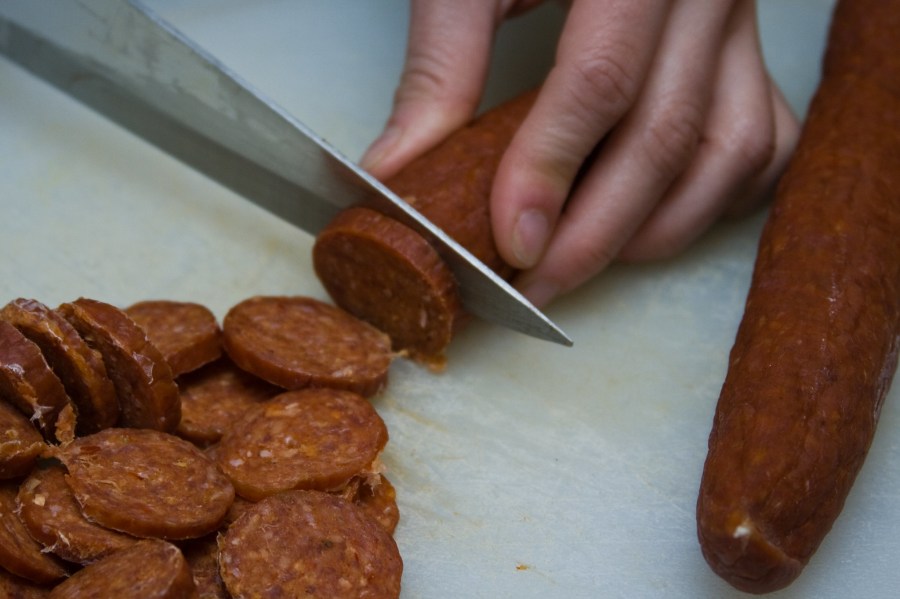What Animal Does Pepperoni Come From?

Pepperoni is usually made from a blend of beef and pork, or cow and pig. However, 100 percent beef pepperoni also exists, and turkey pepperoni is popular among people looking for a low-fat alternative to conventional pepperoni.
What Is Pepperoni Made From?
Pepperoni is made by blending pork and beef. Seasonings include peppers, garlic, fennel, or mustard seeds. Preservatives like salt and sodium nitrate are added to the meat before it is stuffed into casings and left to ferment for several days. Afterward, the pepperoni is allowed to dry for up to 20 days before being shipped. This process is essential for creating pepperoni’s soft, fine-grained texture.
Pepperoni Nutrition
While pepperoni is delicious, it’s not a healthy food. This meat is high in sodium and saturated fat and, while it does offer some protein, it doesn’t offer many nutrients overall. Eating pepperoni every once in a while is fine, but it shouldn’t be a diet staple.
People concerned about the nutritional value of pepperoni may want to try turkey pepperoni. Although it contains more sodium than the conventional variety, turkey pepperoni has significantly less saturated fats. Whether or not turkey pepperoni is a better alternative to regular pepperoni depends upon a person’s dietary needs and health condition. Canadian bacon, shredded white-meat chicken, and lean beef or pork can all be healthier alternatives.
Origins of Pepperoni Pizza
While you might assume pepperoni is from Italy because of its name, it comes from the United States. Like chicken Parmesan, pepperoni was created by Italian immigrants adapting their cuisine to American kitchens. While pepperoni is a variety of salami, there is no type of Italian salami like pepperoni. Peperoni — with two p’s, not three — means “large peppers” in Italian. Why the term gained a letter and now refers to a sausage in English is a mystery. The closest phrase in Italian to American pepperoni might be “salame piccante,” which translates to spicy sausage.
Pepperoni was first mentioned in the U.S. government Yearbook of Agriculture in 1894, although it didn’t gain popularity until the mid-20th century.
Pepperoni on Pizza
Before pepperoni was a pizza topping, sausage, bacon, chicken, and alternative kinds of salami were the norm. The first documented instance of pepperoni on pizza wasn’t until 1950 in New Haven, Connecticut.
As pizza companies like Domino’s and Pizza Hut first opened in the late 1950s and early 1960s, pepperoni offered the restaurant chains several advantages as a topping. Unlike chicken and other toppings at the time, pepperoni was cheap, easy to produce, and stayed fresh during transport. The saltiness of pepperoni also appealed to customers. Because of this, as pizza chains took off in popularity, so did pepperoni. Today, pepperoni pizzas make up about 50 percent of all Domino’s Pizza orders.
Other Ways to Eat Pepperoni
While pepperoni remains most popular as a pizza topping, it can also be found in calzones, sandwiches, and microwave snacks like pizza rolls. It also goes well with baked potatoes and can be eaten by itself.





